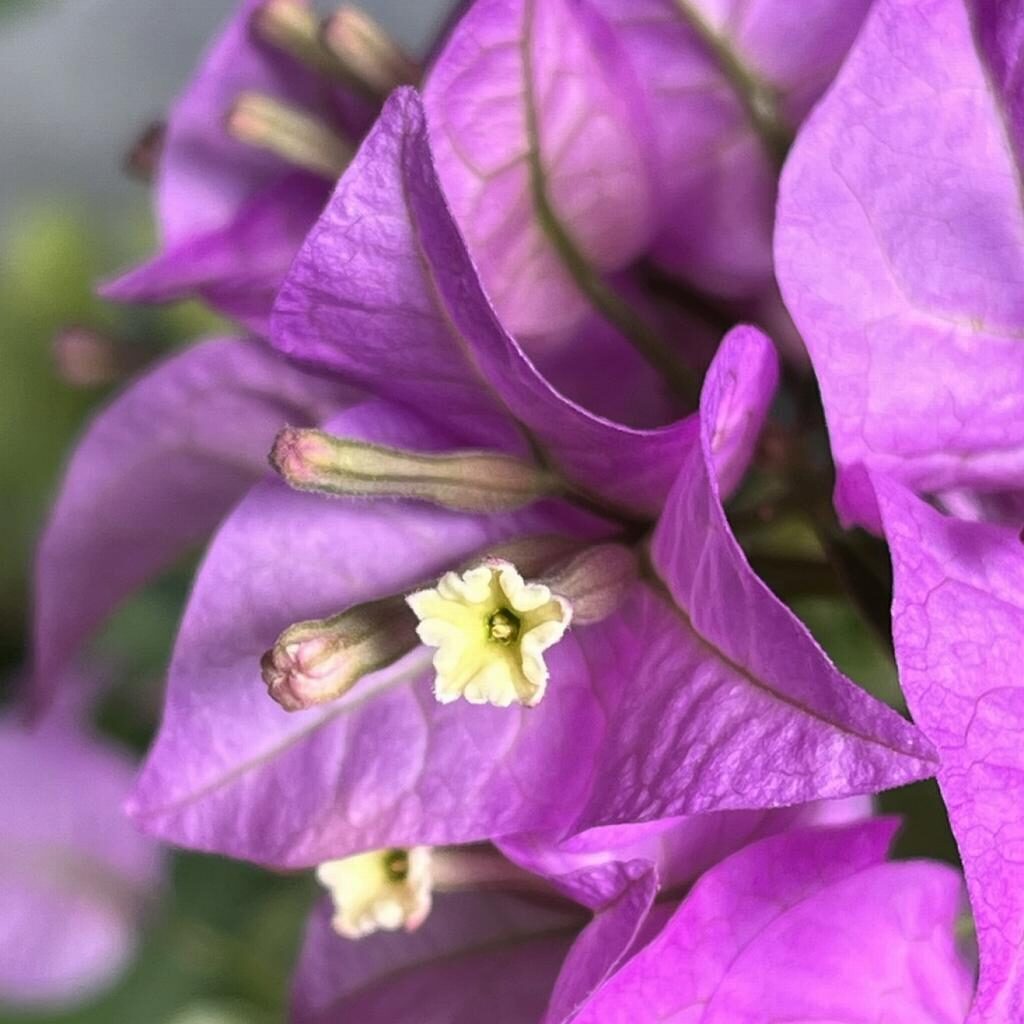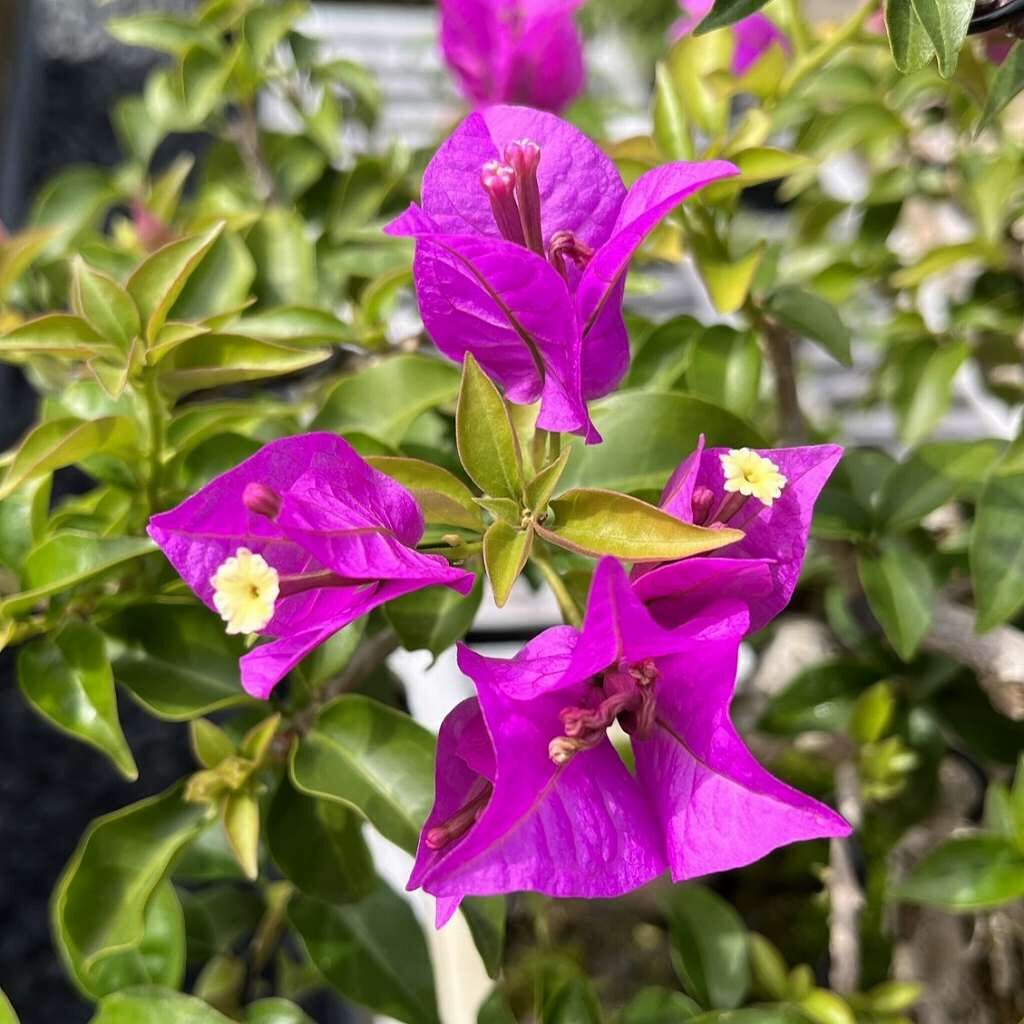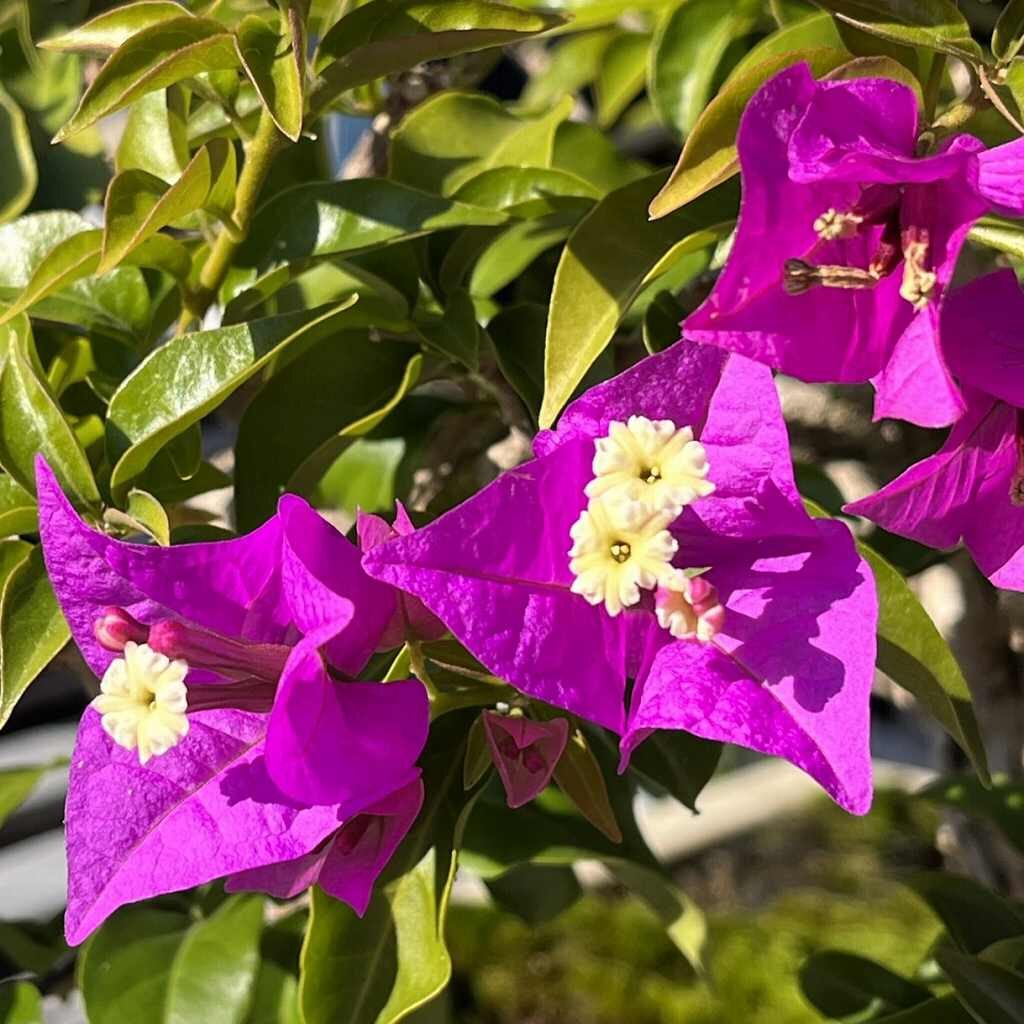ブーゲンビリアの花は白色の小さな筒状で5~6裂、苞は3枚1組で色とりどり。心を揺さぶり、高揚させるので「魂の花」とも呼ばれます。
Bougainvillea flowers are small, white, tubular, with 5 to 6 lobes, and a set of 3 colorful bracts. It is also called the “flower of the soul” because it shakes and uplifts the heart.
【仮名】ブーゲンビリア, ブーゲンビレア, イカダカズラ, ココノエカズラ
【和名】筏葛, 九重葛
【英名】Bougainvillea
【学名】Bougainvillea
【誕生】07/ 23, 07/ 26, 07/ 27, 08/ 16
【開花】04, 05, 10, 11月
【花色】White, Pink, Red, Purple, Yellow, Orange





ブーゲンビリア
ブーゲンビリアの生態
ブーゲンビリアはオシロイバナ科の低木です。原産地は熱帯の中南米。陽当たりがよく、乾燥したところを好みます。日本へは明治時代に渡来。花が1年に2回、春の終わりと秋の終わりに咲きます。花言葉は「情熱」など。心を揺さぶり、高揚させるので「魂の花」とも呼ばれます。
ブーゲンビリアの名前
ブーゲンビリアの名前は18世紀のフランスの探検家ルイ・アントワーヌ・ド・ブーガンヴィルに由来しています。ブーガンヴィルの世界周航の旅に同伴していた植物学者フィリベール・コメルソンがリオデジャネイロで発見。和名は「筏葛」「九重葛」ですが、ほとんど使われません。
ブーゲンビリアの姿形
ブーゲンビリアの枝は疎らに棘があり、葉は卵形で互生します。花は白色の小さな筒状で5~6裂。雄しべも雌しべも目立ちません。一方、苞は脈が走って3枚1組。花弁のように色とりどりで目立ちます。花より傷みにくい苞が花粉を媒介する虫や鳥を誘引。花後は痩果を結びます。
ブーゲンビリアの原種
ブーゲンビリアの原種スペクタビリスはラテン語で「人目を引く」という意味。原産地はブラジル、苞は暗い紫色です。原種グラブラは「無毛の」という意味。原産地はブラジル、苞は明るい紫色です。原種ペルビアナは「ペルーの」という意味。原産地はペルーなど、苞は桃色です。
ブーゲンビリアの品種
ブーゲンビリアは園芸品種が多種多様。たとえば苞が鮮やかな桃色の「ミセスバット」は刈り込んで灌木のように仕立てます。赤紫色の「サンデリアーナ」は蔓性。アーチやフェンスに絡ませます。白色の「サンデリアナホワイト」は耐暑性。「珊瑚礁」という美しい別名もあります。
Bougainvillea
Bougainvillea is a shrub of the Nyctaginaceae family.It is native to tropical Central and South America. Prefers a sunny, dry conditions. Came to Japan in the Meiji period. Flowers bloom twice a year, in late spring and late fall. Flower language is “passion”. It is also called the “flower of the soul” because it shakes and uplifts the heart.
Bougainvillea gets its name from the 18th century French explorer Louis Antoine de Bougainville. Discovered in Rio de Janeiro by the botanist Philibert Commercon, who accompanied Bougainville on his round-the-world voyage. The Japanese names are “Raft Vine” and “Overlapping Vine”, but they are rarely used.
The branches of Bougainvillea have sparse spines and the leaves are ovate and alternate. The flowers are white, small, tubular and 5-6 lobed. Neither stamens nor pistils are conspicuous. On the other hand, the bracts have a pulse and a set of three. Colorful and conspicuous like petals. The bracts, which are less damaged than the flowers, attract pollinating insects and birds. After flowering, it bears achenes.
Ancestors of Bougainvillea are: Spectabilis is Latin for “attractive”. It is native to Brazil and has dark purple bracts. Glabra means “hairless”. Native to Brazil, and bright purple bracts. Peruviana means “Peruvian”. Native to Peru, and pink bracts.
Bougainvillea has a wide variety of cultivars. For example, “Mrs. Bat”, which has vivid pink bracts, is pruned to give it a shrub-like shape. The reddish-purple “Sanderiana” is vine. Tie it to an arch or fence. The white “Sanderiana White” is heat resistant. It also has a beautiful nickname “Coral Reef”.


